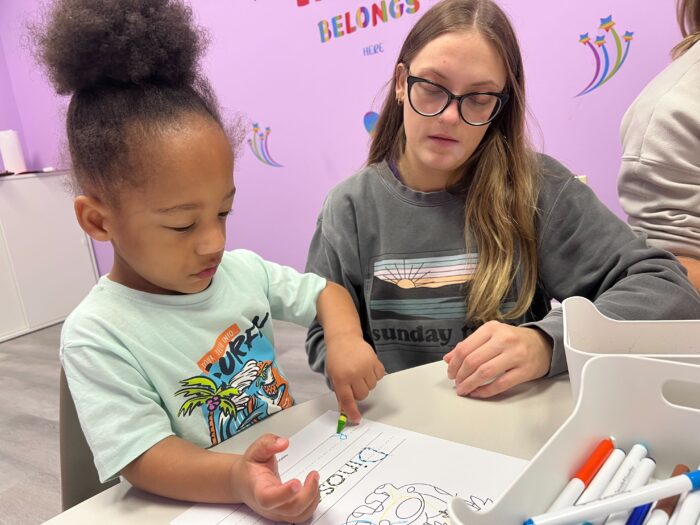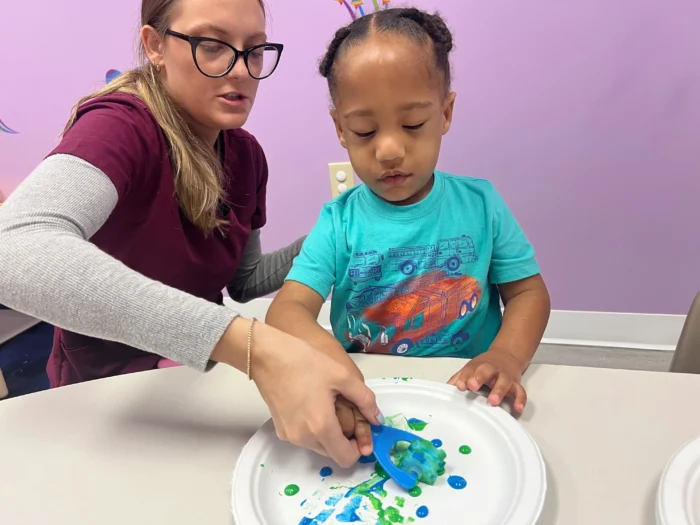
Finding the right support for a child with autism can feel like navigating a maze, full of hope, questions, and choices. One path that often comes up is Applied Behavior Analysis, or ABA therapy.
We believe you deserve both the scientific evidence and the real-world perspective to make informed decisions for your child. Let’s explore together what research tells us about ABA therapy’s effectiveness, while also addressing the questions and concerns we often hear from parents.
Understanding the Basics: What Is ABA Therapy?
Applied Behavior Analysis (ABA) is more than a therapeutic strategy – it’s a way of understanding how your child learns and interacts with their world. While it’s rooted in behavioral science, modern ABA therapy is about creating personalized approaches that celebrate each child’s unique abilities and help them develop meaningful skills for daily life.
At its core, ABA therapy focuses on helping children navigate the world around them as they grow while feeling loved and supported. What makes it particularly effective is how it can be tailored to each child’s individual needs, interests, and learning style.
Evaluating the Impact: What Research Tells Us
When parents ask us about ABA therapy’s effectiveness, we can point to both research and what we evidence in our practice every day:
- A comprehensive review of 770 studies confirmed the beneficial effects of ABA therapy for children with autism, leading the U.S. Department of Health and Human Services to recommend it as a treatment option.
- A 2020 study analyzing 14 randomized control trials with 555 children found significant improvements in socialization, communication, and expressive language.
While these studies are vital to understanding the efficacy of ABA therapy, we believe the real measure of success is how ABA therapy makes each child feel in their daily life. That’s why we carefully monitor how they are feeling and regularly adjust our approach based on your child’s responses and needs.
Can ABA Therapy Help Different Types of Autism?
One of ABA therapy’s strengths is its adaptability. We’ve seen it benefit children across the autism spectrum, from those who need support with basic communication to those working on more complex social skills.
For children who need more intensive support, we focus on:
- Building essential life skills
- Developing effective communication strategies
- Supporting behaviors that empower each child’s learning journey
For children with mild or high-functioning autism, we might emphasize:
- Enhancing social skills
- Building greater independence
- Enhancing behaviors that support daily life skills
ABA therapy can also be used for a variety of conditions, some of which usually affect children on the spectrum.
Addressing Concerns About ABA Therapy
We believe in having open, honest conversations about ABA therapy, including addressing concerns that some have raised.
Modern ABA therapy has evolved significantly from its early days, and we’re committed to approaches that:
- Respect each child’s unique personality and way of being
- Focus on positive reinforcement rather than punishment
- Consider emotional well-being
- Involve parents in decision-making about the treatment
- Adapt to each child’s individual needs and preferences
Looking Ahead: How ABA Therapy Continues to Evolve
The field of ABA therapy is constantly growing and improving. Some exciting developments include:
- Enhanced use of technology to improve the personalization of treatment
- Earlier intervention opportunities through improved diagnosis
- Integration of ABA principles in educational settings
- Expansion of telehealth services to reach more families
- Innovation in making therapy more engaging and accessible
We stay current with these advances while maintaining our focus on what matters most: your child’s individual needs and growth.
Final Thoughts
So, does ABA therapy work? Indeed, it does. Its effectiveness comes from how it’s implemented – with love, respect, and attention to each child’s unique needs. We’ve witnessed countless children learn important life skills while feeling loved and supported, but we also know that every child’s journey is different.
When families come to us, we take time to understand their specific situations, concerns, and goals. We believe in creating therapy plans that work for both the child and their family, adjusting our approach as needed to ensure everyone is feeling satisfied and happy.
FAQs
What is the success rate of ABA therapy?
While research shows positive outcomes for many children, we focus less on general statistics and more on each child’s feelings. Dr. Lovaas’s research showed that 89% of children responded positively to ABA, but we believe success should be measured by your child’s happiness and well-being.
At what age is ABA most effective?
While early intervention (before age 2) can be particularly beneficial, we’ve seen children make significant progress starting at various ages. Each child’s readiness and needs are different, and it’s never too late to begin supporting their development.
How long does it take for ABA to work?
The timeline varies for each child, depending on their individual needs and the intensity of therapy. Some children adapt and love the treatment within months while others may need longer. At Abacus Therapies, we regularly assess how your child is feeling and adjust our approach to ensure they continue to grow and develop at their own pace.



